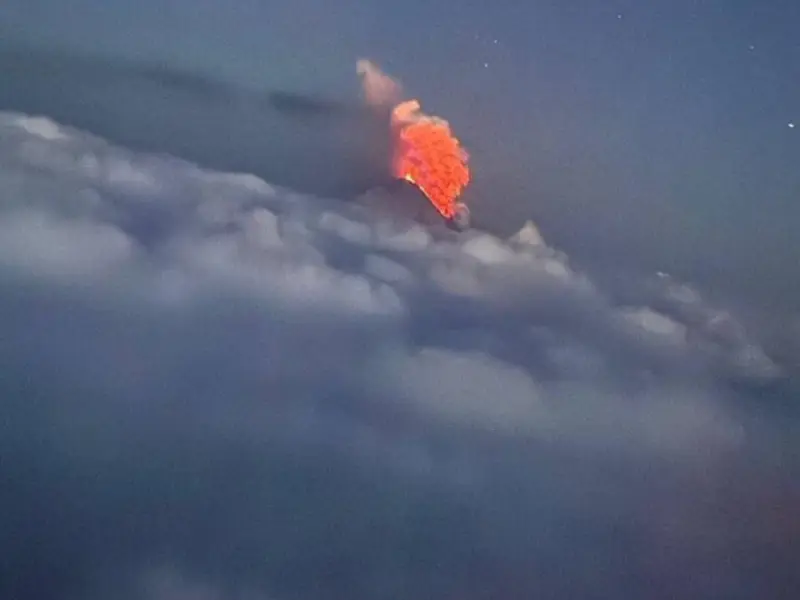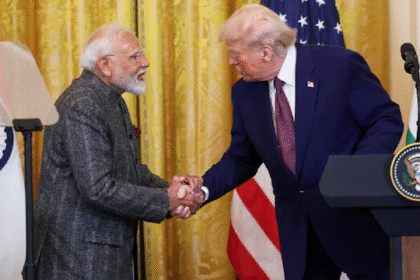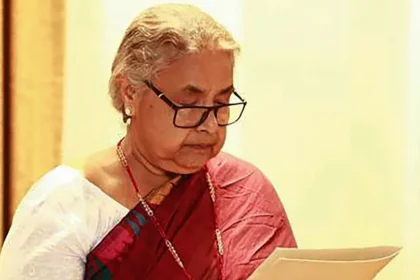Eurasia’s Highest Volcano Erupts After Massive 8.8 Earthquake: Russia’s Klyuchevskoy Spews Red-Hot Lava Rivers
Eurasia’s highest volcano, Klyuchevskoy, erupts in Russia after a massive 8.8 earthquake, unleashing rivers of lava and red-hot ash. Red alert issued for aviation
Kamchatka, Russia – July 31, 2025 — In a stunning and terrifying display of nature’s raw power, Klyuchevskoy volcano, Eurasia’s tallest and most active volcano located in Russia’s remote Kamchatka Peninsula, erupted violently just hours after a massive 8.8 magnitude earthquake shook the region. The rare sequence of seismic and volcanic activity has set off alarm bells among scientists and emergency responders as rivers of red-hot lava now pour down the mountain’s steep flanks, with thick ash clouds billowing into the sky and visible for hundreds of kilometers.
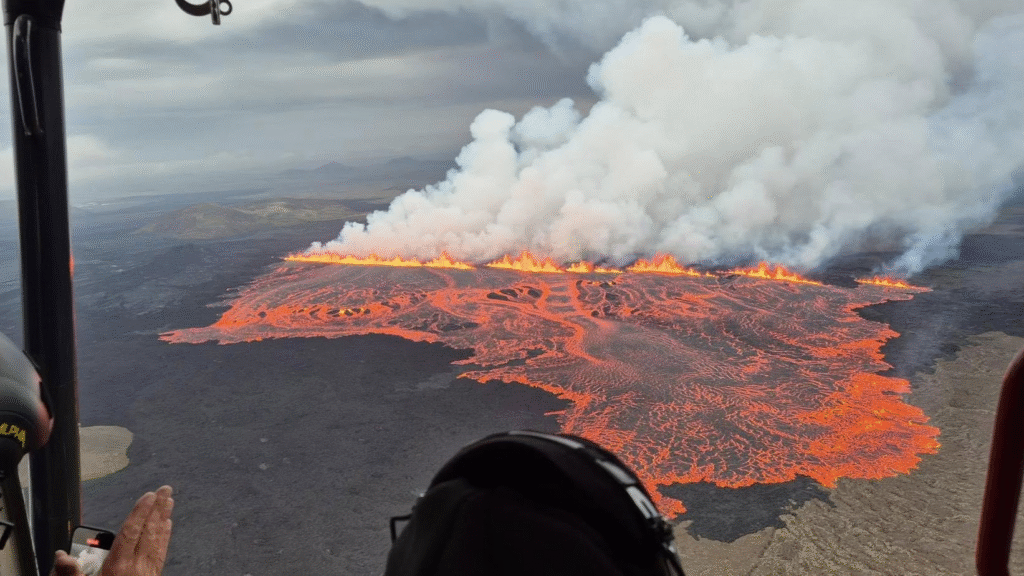
This unexpected geological double blow is being described as one of Russia’s most significant natural disasters in recent years, potentially affecting air travel, infrastructure, and ecosystems throughout eastern Siberia.
Klyuchevskoy, rising to a towering 4,750 meters (15,584 feet), is not only the tallest active volcano in Eurasia, but also one of the most formidable fire mountains on Earth. Located on the volatile Pacific Ring of Fire, this stratovolcano has a long history of eruptions, with its last major outburst recorded in 2020. However, the current eruption, triggered in the aftermath of a massive tectonic shift, appears to be of unprecedented scale and ferocity.
Eyewitnesses from nearby villages like Klyuchi and Kozyrevsk, situated within 50 kilometers of the volcano, reported hearing thunder-like explosions, followed by the sight of a towering ash plume that darkened the midday sky. Moments later, molten lava began gushing from several fissures on the volcano’s southeastern flank, carving crimson rivers down its snow-covered slopes and igniting vegetation in its path.
At around 3:16 AM local time, the Kamchatka Peninsula was rocked by a magnitude 8.8 earthquake—the strongest recorded in the region since 1952. The epicenter was located near the Kuril-Kamchatka Trench, a highly active subduction zone where the Pacific Plate dives beneath the Okhotsk Plate. The quake was shallow, striking at a depth of just 12 kilometers, which amplified its destructive potential.
Buildings across Petropavlovsk-Kamchatsky, the region’s capital, shook violently for over 90 seconds. Tremors were felt as far away as Magadan and Sakhalin Island. Initial reports indicate significant structural damage, but due to the sparse population and timely emergency alerts, no fatalities have yet been confirmed.
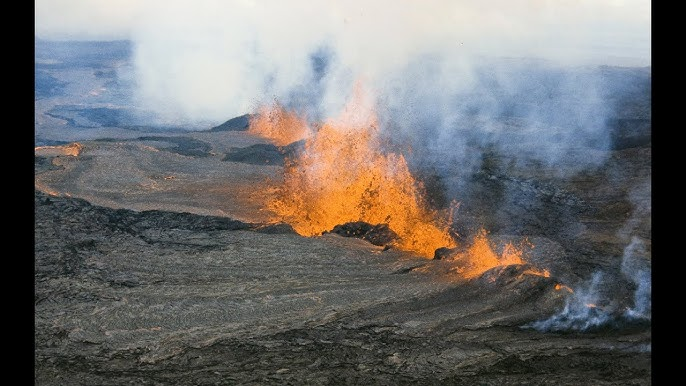
However, it was the aftermath of the earthquake that truly shocked volcanologists: within four hours, seismic data detected an abrupt increase in magma movement beneath Klyuchevskoy’s crater. Satellite thermal imagery showed the volcano’s temperature rising, and at 7:52 AM, the eruption began with a booming explosion that shook windows 30 kilometers away.
Since the eruption began, the Kamchatka Volcanic Eruption Response Team (KVERT) has elevated Klyuchevskoy’s aviation color code to RED, indicating that a major eruption is underway with ash columns exceeding 10 kilometers (33,000 feet)—posing severe risks to commercial aviation routes over the Pacific.
Rivers of incandescent lava—some stretching more than 12 kilometers in length—are burning through the forested lower slopes, with toxic gases and pyroclastic flows threatening everything in their path. Emergency response units have been deployed to establish exclusion zones around Klyuchi, Kozyrevsk, and Ust-Kamchatsk, with over 2,000 residents evacuated as a precaution.
Dr. Elena Petrova, a leading volcanologist at the Russian Academy of Sciences, warned:
“This eruption is a textbook example of tectonic-volcanic interaction. The 8.8 quake likely cracked the crust, allowing pressurized magma chambers to rupture explosively. What we’re witnessing is a highly dynamic eruption cycle that could last days, if not weeks.”
Klyuchevskoy’s location is critical for trans-Pacific flight paths, especially for carriers between Asia and North America. Already, several airlines including Aeroflot, Delta, and Japan Airlines have rerouted or canceled flights to avoid the ash cloud, which can severely damage jet engines and reduce visibility.
Additionally, volcanic ash poses risks to ecosystems in the region. The Kamchatka brown bear, reindeer populations, and migratory birds are all being monitored for displacement or health effects due to ash inhalation and habitat destruction.
There is also concern over the volcanic gases—especially sulfur dioxide—which can contribute to acid rain and short-term climate cooling. Satellite data from NASA and ESA confirm that large volumes of sulfur compounds have already reached the stratosphere.
The near-simultaneous occurrence of an 8.8 magnitude earthquake and a major volcanic eruption has set off international alarms. Geologists are now studying the potential for a chain reaction along other vulnerable fault lines in the Pacific Ring of Fire—including Japan, Alaska, and the Philippines.
“This isn’t just a Russian issue—it’s part of a broader tectonic picture,” said Dr. Marcus Hill, a USGS senior seismologist. “Large earthquakes like this can redistribute stress along the Earth’s crust, potentially triggering other faults or even distant volcanic systems.”
The UN Office for Disaster Risk Reduction (UNDRR) has offered support to Russia and is coordinating with the International Volcanic Health Hazard Network (IVHHN) to assess the air quality and human health risks, particularly for children and the elderly.
For residents of Kamchatka, this is not their first brush with natural fury. The region—home to over 160 volcanoes, 29 of which are active—has endured eruptions, quakes, and tsunamis for centuries. But the sheer scale of this event is testing the limits of disaster preparedness.
Schools, power stations, and communication lines in several towns have been temporarily shut down, and emergency shelters are being operated by local government agencies and the Russian Emergency Ministry (EMERCOM).
President Vladimir Putin has been briefed and has directed federal agencies to assist with monitoring and evacuation. In a public statement, he reassured citizens that “every necessary measure is being taken to protect the lives of our people in Kamchatka.”
Read Also : Disha Patani Slays in ₹25K Streetwear Look, Turns Mumbai Streets Into Her Runway — 7 Viral Pics You Must See


